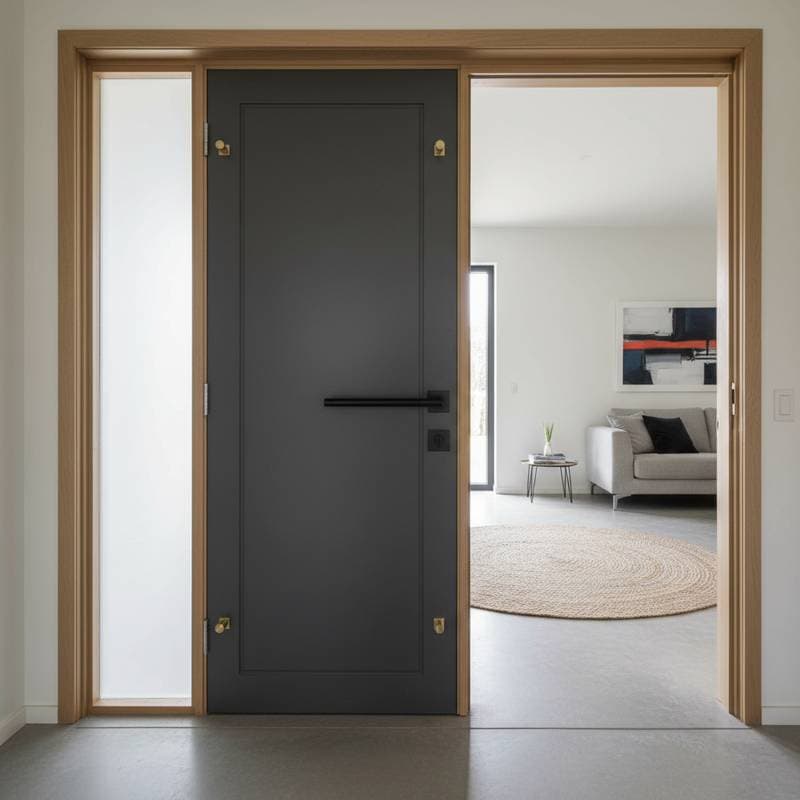Why Black Aluminum Windows Are Replacing Vinyl in 2025
Homeowners increasingly select black aluminum frames over traditional vinyl options for window replacements. This transition stems from evolving design tastes, enhanced energy performance, and extended durability. For those considering a window upgrade in the coming year, a clear understanding of the advantages of black aluminum windows supports informed choices.
Costs and Installation Essentials
Black aluminum windows generally range from $600 to $1,200 per unit when installed, covering materials and labor. Vinyl alternatives cost between $350 and $850 per window, presenting initial savings. However, aluminum frames often endure 10 years longer than vinyl, particularly in regions with intense sunlight or fluctuating temperatures.
| Material Type | Average Installed Cost | Expected Lifespan | Maintenance Level |
|---|---|---|---|
| Vinyl Windows | $350 to $850 | 20 to 25 years | Low |
| Black Aluminum Windows | $600 to $1,200 | 30 to 40 years | Very Low |
David Lopez, a window installer with more than 20 years in residential work, states, “Homeowners select aluminum for its resilience under pressure, not only its appearance. Vinyl may warp or fade, whereas aluminum remains stable.”
To estimate project expenses accurately, consult local contractors for site-specific quotes. Factor in removal of old windows, which adds $100 to $300 per unit depending on access and disposal needs.
Key Advantages of Black Aluminum Windows
Sleek Design Integration
Black aluminum frames align seamlessly with modern and industrial home aesthetics. Their narrow profiles maximize glass surface area, allowing greater natural light entry and a streamlined architectural presence. In contrast, vinyl frames appear thicker and limit these visual benefits.
Select black aluminum to complement minimalist interiors or bold exteriors. Pair them with neutral walls or metallic accents for a cohesive look that elevates curb appeal.
Superior Durability
As a robust metal, aluminum withstands warping, cracking, and thermal expansion without compromise. Vinyl softens in high heat or becomes fragile in cold conditions, leading to premature issues. This inherent strength in aluminum reduces the need for frequent interventions.
In coastal or humid areas, aluminum resists corrosion when properly coated, extending service life beyond vinyl counterparts. Test frame integrity during installation by ensuring secure anchoring to withstand wind loads up to 150 mph.
Lasting Color Performance
Powder-coated black finishes on aluminum bond permanently through a baking process, defending against UV fading and surface degradation. Vinyl colors often dull or wear after years of exposure, requiring repainting or replacement.
Choose matte black for a subtle elegance or gloss for high contrast. These coatings maintain vibrancy for 20 years or more, minimizing aesthetic upkeep.
Energy Performance and Thermal Properties
Vinyl once held an edge in insulation, yet advancements in aluminum design close the gap. Thermal breaks—insulating barriers within the frame—along with foam-filled cavities, minimize conductive heat loss. These features enable aluminum windows to match or exceed vinyl efficiency in standardized tests.
Opt for low-emissivity (Low-E) glass coatings to block up to 70 percent of solar heat gain while preserving views. Triple-pane configurations suit colder climates, potentially lowering heating bills by 15 to 25 percent annually.
| Feature | Vinyl Windows | Black Aluminum Windows |
|---|---|---|
| Insulation Performance | High | High with thermal break |
| Frame Rigidity | Moderate | Excellent |
| Color Options | Limited | Wide, black most popular |
| Recyclability | Moderate | Excellent |
Aluminum's recyclability supports sustainable building practices, with 75 percent of used frames repurposed without quality loss.
Practical Installation and Upkeep
Aluminum installation demands meticulous attention due to metal's thermal conductivity. Installers apply high-quality seals, flashing, and insulated gaskets to eliminate moisture buildup and drafts. Verify that crews use expansion joints in frames longer than 10 feet to accommodate movement.
Upkeep remains straightforward: wipe frames quarterly with a soft cloth and mild detergent. Steer clear of harsh chemicals that might dull the powder coat. Unlike vinyl, which may need sealant reapplication every five years, aluminum requires no such treatments.
For DIY enthusiasts, focus on measuring openings precisely—allow 1/8-inch clearance on all sides for proper fit. Professional oversight ensures compliance with building codes, especially in energy-regulated zones.
Elements Affecting Total Expenses
Several variables shape the overall investment in window replacements:
- Window Dimensions and Configuration: Oversized or non-standard shapes elevate costs by 30 to 50 percent due to custom fabrication.
- Glazing Specifications: Argon-filled panes or solar-control films add 10 to 20 percent, but yield rebates through utility incentives.
- Site Challenges: Elevating equipment for second-story work or navigating obstacles like landscaping increases labor by $200 to $500 per window.
- Customization Levels: High-end finishes, such as antimicrobial coatings, enhance longevity at a 15 percent premium.
Budget 10 to 15 percent extra for unforeseen adjustments, like reinforcing sills in older structures.
Upgrade Your Home with Black Aluminum Windows
Transitioning from vinyl to black aluminum revitalizes both function and style in your residence. This choice delivers enduring strength, contemporary flair, and optimized efficiency tailored to future-oriented living.
Schedule a professional assessment to identify ideal placements, such as sun-facing exposures for maximum energy gains. With routine care, these windows sustain peak condition for generations, aligning investments with lasting home improvements.






